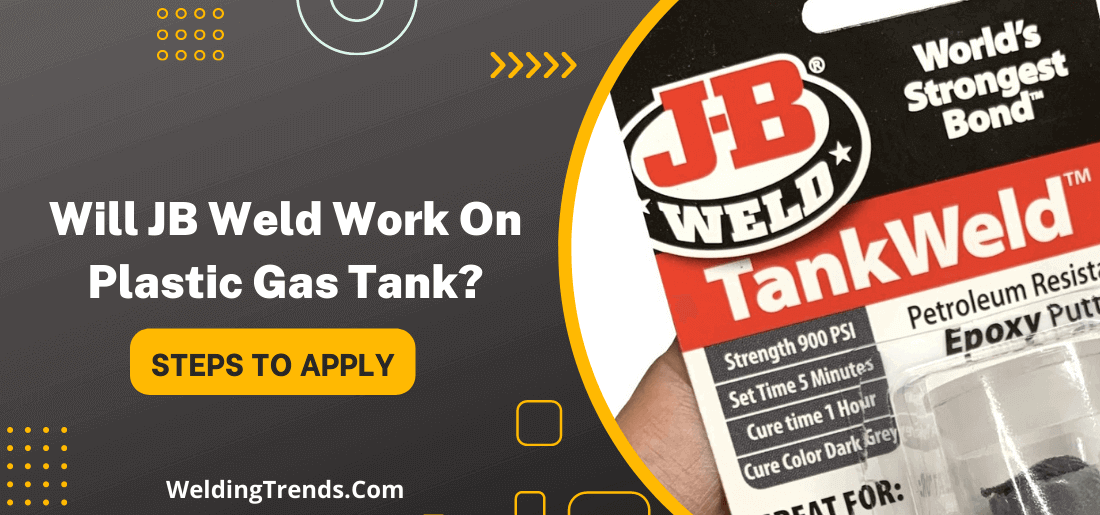Have you ever had to fix a gas tank? It can be a real pain, especially if the hole is on the bottom. You can try to patch it with JB weld, but will it work? Keep reading to find out.
Most people would say that fixing a gas tank is a big pain. And they would be right! If the hole is on the bottom, it can be almost impossible to fix.
But what if I told you there was a way to do it using JB weld? Would you believe me? Well, keep reading and you’ll see how it’s done.
How to use JB weld to fix a plastic gas tank?
JB weld is typically used to repair cracks or holes in surfaces and can also be used to bond two separate pieces of material together.
When using a JB weld to fix a plastic gas tank, it is important to clean and roughen the surface of the tank before applying the JB weld. Once the JB weld is in place, it will need to cure for at least 24 hours before being used.
If you are using JB weld to fix a hole in a plastic gas tank, start by cleaning the area around the hole with a degreaser or alcohol. Then, use a file or sandpaper to roughen the surface of the plastic around the hole. This will help the JB weld to adhere to the surface.
Next, mix an equal amount of JB weld resin and hardener. Apply the mixture to the hole and then smooth it out with a putty knife. Allow the JB weld to cure for at least 24 hours before using the gas tank.
Benefits of using JB weld to fix a plastic gas tank
Following are the benefits of using JB weld to fix a plastic gas tank:
- It is a strong and durable repair.
- JB weld can resist high temperatures.
- It can be used on both vertical and horizontal surfaces.
- JB weld can be sanded and painted over once it has dried.
- It is easy to use and does not require any special tools or equipment.
- 6. It can be used to repair cracks, holes and leaks in plastic gas tanks.
- It is an affordable repair option.
- JB weld is a permanent repair and will not come undone over time.
- It is safe to use and does not give off any dangerous fumes.
- It dries quickly and can be used within minutes of mixing the two parts.
JB weld is an ideal repair option for fixing a plastic gas tank. It is strong and durable, can resist high temperatures and can be used on both vertical and horizontal surfaces.
It is also easy to use, affordable and permanent. JB weld is safe to use and dries quickly, making it a convenient repair option.
Risks associated with using JB weld to fix plastic gas tank
There are many risks associated with using JB Weld to fix a plastic gas tank.
- The biggest risk is that the JB Weld will not properly adhere to the plastic and will eventually come loose, causing a leak.
- If the JB Weld does not completely seal the hole, then fumes could escape and potentially ignite, causing an explosion. Therefore, it is very important to make sure that the area is properly ventilated when using JB Weld on a plastic gas tank.
- Another risk is that the JB Weld may not cure properly if it is not mixed correctly or if it is exposed to too much heat. If the JB Weld does not cure properly, it will remain soft and pliable, which could lead to another leak.
- Finally, if the JB Weld does not completely seal the hole in the gas tank, then water could potentially enter the tank and rust the metal components.
While there are many risks associated with using JB Weld to fix a plastic gas tank, it is still possible to do so successfully if you take the time to do it properly.
Make sure that you follow the instructions carefully and take all of the necessary precautions to avoid any accidents.
Alternatives to JB weld for fixing a plastic gas tank
Either using JB weld for fixing a plastic tank, there are a few other options to choose from.
1) Two-part epoxy
This will work similarly to JB weld in that it will create a bond between the plastic and will act as a sealant. The difference is that epoxy is typically stronger than JB weld and will set quicker.
2) Plastic Welding kit
Another option is to use a plastic welding kit. This will essentially melt the plastic together to create a seal. This is a more permanent solution than JB weld or epoxy but can be more difficult to do if you don’t have experience welding plastic.
3) Replace the gas tank
Finally, you could also just replace the entire gas tank. This is the most expensive option, but if the tank is severely damaged, it may be the only option.
Hopefully, this gives you a few ideas of alternatives to JB weld for fixing a plastic gas tank.
How to avoid common mistakes when using JB weld? 12 Tips
Some Common mistakes we should avoid when using JB weld include:
- Not preparing the surface
- Not mixing the epoxy correctly
- Applying too much or too little pressure
- Not allowing the epoxy to cure fully
- Using JB weld on an inappropriate surface
- Not using the correct type of JB weld for the job
- Not following the manufacturer’s instructions
- Trying to fix too much at once
- Not giving the repair enough time to set
- Removing the clamps too soon
- Not sanding or grinding the JB weld smooth
- Not painting or sealing the repair
JB weld is a strong and versatile epoxy, but it’s important to avoid making common mistakes when using it. By following the tips above, you can ensure a successful repair.
Final Thoughts
JB weld is a great option for repairing plastic gas tanks. It can be used to fix small or large cracks and it dries quickly so you can get your tank back in use fast.
There are some important things to remember when using JB weld on a plastic gas tank. Make sure you use the right type of JB weld, mix it correctly and apply it evenly. If you’re looking for an easy way to repair your cracked gas tank, JB weld is the product for you.
JB weld bonds well to the plastic and forms a seal that will keep your tank from leaking.




